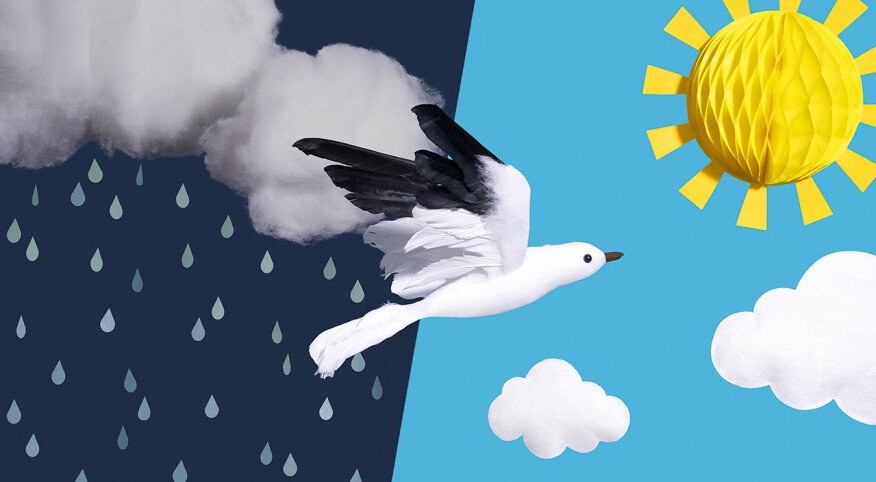Do any of you love to travel? Then join our closed Facebook group, The Ethel-On-The-Go, for mature women who love a bit of adventure.
I followed the sun for most of my life because I was afraid of how depressed I would feel in winter.
Growing up in the Midwest, (where I live now), there were some gloomy days coupled with snow. Not only did the cloudiness of winter sometimes affect my mood, appetite and energy, but I was also often unhappy and there seemed to be no cause.
Even though Chicago is one of the most architecturally beautiful and truly fun cities in the country, there was a general malaise during the season I dreaded most. Nothing seemed interesting or worth doing. Not surprisingly, when summer came, I often felt much better.
After a visit to my general practitioner, I found out I had a condition called seasonal affective disorder, or SAD. It’s a depression brought on by a lack of sunlight, warmth and a change in hours that can affect one's inner rhythms.
It feels good to know I’m not alone. Many Americans and even a few other species such as birds, who we all know fly south for the winter, share the same problem. Coincidentally, studies show birds can also feel sadness because they share some likeness to humans when it comes to brains, hormones and neurotransmitters, according to The Spruce Pets, a site devoted to pet health.
Just like my avian friends, by fall, I start to feel SAD coming. It’s a flat feeling of hopelessness that feels like low-key depression. This condition is estimated to affect 10 million Americans every year, according to the Mayo Clinic.
Unfortunately for me, SAD is much more common in women than men.
I was in high school when I first felt depressed. During the days of parties and shy dating, I never felt like laughing because nothing seemed funny. The weather was sometimes bleak, and I isolated myself because even holding a conversation was difficult.
It became dark at about 4 p.m. and that threw me off. I didn’t speak about how I was feeling. No one else seemed to be so sad. I longed for the warmth, sunlight and Vitamin D of summer. When it was time to go to college, I headed for Northern Arizona University after which I worked for magazines and newspapers in California, Florida and Louisiana.
I would have interviewed to be a reporter for the Sahara Desert Times if it existed.
Dr. Gabriela Cora, a Miami-based psychiatrist, sheds light on how the combination of shorter days and longer nights impacts our well-being. While these environmental shifts disrupt our circadian rhythm, there’s hope for those of us whose moods match the pewter skies of winter.
"Exercise helps," Cora says. "Changing your diet also helps in trying to eat less of the carbohydrates those with SAD crave. Stick to plant-based foods and cut down on sugar. Getting up earlier and keeping the same sleep schedule also helps."
Along with a healthy diet and exercise, light boxes that are readily available online can also be helpful. If that doesn’t lessen the blues, she suggests anti-depressants under the direction of a medical professional.
I’ve used light boxes myself and they are a true pick-me-up to counter SAD-related depression. The devices are literally what they sound like — boxes of light that you stare into. I bought mine on Amazon, where pricing starts at $18 and moves upwards for more sophisticated models.
According to recommendations from the Mayo Clinic regarding light box therapy: "It's thought that this type of light may cause a chemical change in the brain that lifts your mood and eases other symptoms of SAD, such as being tired most of the time and sleeping too much. Generally, the light box should: Provide an exposure to 10,000 lux of light. Produce as little UV light as possible."
Getting diagnosed with SAD can sometimes take time. It’s hard to know if your depression is weather-related or can be another problem. Along with a light box, eventually, my doctor did prescribe an antidepressant, which has not only worked for winter blahs but has also been effective in stemming hot flashes from menopause. I have also become more conscious of adopting a plant-based diet and upping my exercise schedule.
While I do feel much better with these various remedies, I do struggle with truly sad moods in the dead of a Chicago winter. However, when spring arrives, my spirit and outlook are cheerier and brighter. And during those beautiful Chicago summers, warm and windy and surrounded by Lake Michigan, we natives are soaking up the sunlight and even dancing in the streets with all our summer outdoor festivals.
Do any of you suffer from SAD? How do you cope? Let us know in the comments below.

Margeaux Walter
Follow Article Topics: Health





